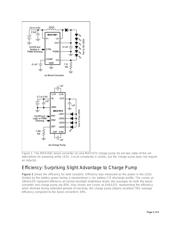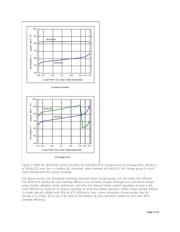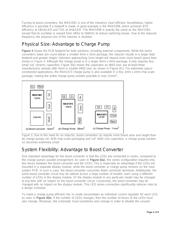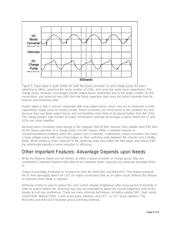下载

Maxim > Design Support > Technical Documents > Application Notes > Power-Supply Circuits > APP 3243
Keywords: White LED, charge pump, current matching, uniform intensity
APPLICATION NOTE 3243
White-LED Boost Converter vs. Charge Pump
Jan 28, 2005
Abstract: Powering white-LEDs in today's handheld electronics requires specialized regulators. Two
common styles of regulators exist, each with its own advantages and disadvantages. This application
note discusses the strengths of each type of regulator. The MAX1561 and MAX1573 are used as
examples.
Today's handheld electronics commonly incorporate color LCD displays with white LEDs as the
backlight. Optimally powering white LEDs requires specialized regulators that both overcome the high
forward-voltage of the LED and provide constant-current drive to minimize intensity variations with
battery voltage and between LEDs. For this purpose, there are two mainstream regulator types: inductor-
based boost converters and capacitor-based charge-pump converters. Each regulator type has specific
advantages/disadvantages, so optimal selection depends on the system's particular priorities.
This article compares a state-of-the-art regulator of each type, the MAX1561 boost converter versus the
MAX1573 charge pump. The merits of each regulator type are evaluated, and the conclusions will aid
system designers in selecting an appropriate solution. The MAX1561 and MAX1573 are especially well
suited for comparison because both products were designed at the same time, are fabricated in the
same facility on the same process, and both switch at the same 1MHz frequency.
Schematic Complexity: Slight Advantage to Charge Pump
Figure 1 shows the schematics for both regulator solutions. The circuits are simple with only a few
external components, but the boost convert requires an inductor and Schottky diode. (Some competing
boost converters integrate the Schottky diode, but usually with a reduction in efficiency.)
Page 1 of 8








